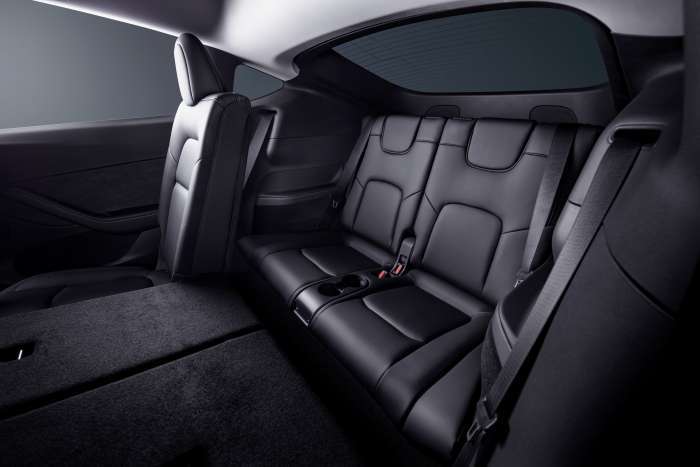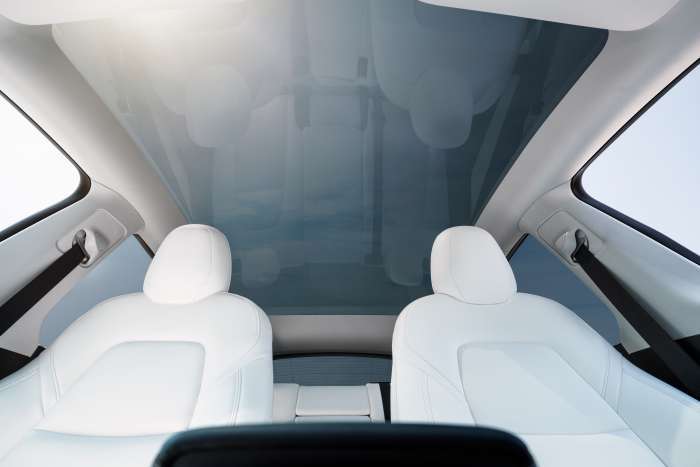Tesla is by all means willing to change the technology of all the systems included in traditional cars. This time the turn is the heating and cooling systems of the seats, which the company says need a serious review since they are highly inefficient and do not give the expected results. The new patent uses a liquid that is pumped into the seat, and a temperature control system based on layers that allow the fluid to pass through it.
There is an ever greater need to minimize the use of thermal control systems in the passenger compartment of EVs, since the necessary energy comes from the battery and can significantly reduce the vehicle's range. For this reason many EVs have more efficient heating and cooling systems, as is the case with those implemented in the seats, or the steering wheel itself. This way, it is possible to more directly heat the body of the driver and passengers, and thus reduce the use of air conditioning or heating in the passenger compartment.

The patent document published by Tesla for a new integrated temperature control system for its vehicle seats was published on March 31, 2022; that is, six days ago. It states that it is a continuation of its patent “Vehicle seat with integrated temperature control system", officially presented on February 21, 2019.
In the document's introduction, Tesla lists the reasons why current seat temperature control systems are so inefficient. In the case of ventilation, the foam with which the seats are made complicates the extraction of heat; on the other hand, conventional heating systems are bulky, occupying too much space inside the seats that make them generally thick, heavy, and above all highly inefficient for actually heating the seat. The heat generally must travel through multiple layers and heats areas of the seat that the occupant does not directly come into contact with. Therefore, "there is a need for an improved temperature control system for vehicle seats," according to Tesla.

Tesla's new system features multiple layers of materials, a fluid pump and a heating component, allowing it to actively cool and heat the vehicle's seats. Tesla's solution is, again, to create a temperature control system that basically pumps fluid throughout the vehicle's seat. “The temperature control system includes a base layer, an intermediate layer disposed adjacent to the base layer that allows fluid to pass through it, and a cover layer disposed adjacent to the intermediate layer. At least one heating element arranged between the intermediate layer and the cover layer, and a fluid pump that propels it through the intermediate layer is also necessary, ” says the patent.
SCOOP! REFRESHED MODEL S SEATS PATENTED HEATING/COOLING SYSTEM
?DECAVALVE?
Sharp eyed ppl in the thread noticed possibly perforated seat material. This could be the first application of Tesla's seat heating/cooling patent
Patent to save lots of energy in cold/hot weather
1/ https://t.co/I2DJfMcySD— A Few Others(ConnectingTheDots) (@ConnectingODots) May 6, 2021
Tesla hopes the new system will reduce vehicle manufacturing costs and at the same time minimize noise in the cabin, while using the vehicle's energy way more efficiently. There is an analogy between the traditional resistance heating systems used in combustion vehicles and the heat pump that many of the electric cars on the market usually have - at least optionally - and that Tesla started using for the first time in the Model Y.
All images courtesy of Tesla Inc.
Nico Caballero is the VP of Finance of Cogency Power, specializing in solar energy. He also holds a Diploma in Electric Cars from Delft University of Technology in the Netherlands, and enjoys doing research about Tesla and EV batteries. He can be reached at @NicoTorqueNews on Twitter. Nico covers Tesla and electric vehicle latest happenings at Torque News.












